Daylighting in Density
DAYLIGHTING IN DENSITY: A PARAMETRIC STUDY OF HIGH-RISE
RESIDENTIAL BUILDINGS AND URBAN STREET CANYON CONFIGURATIONS
IN DHAKA, BANGLADESH
Sumaiya Mehjabeen
A Thesis in Architecture Submitted in Partial Fulfillment of the Requirements for the Degree of
Master of Science
The Pennsylvania State University
August 2020

Daylighting has gained significant attention in the contemporary building industry to support a sustainable living environment. Access to daylight in design is a challenge in the ever-increasing density of urban contexts, especially in developing countries. Empirical research shows that daylighting needs to be incorporated to ensure a sustainable living condition in regularly occupied spaces, including residential buildings for occupant well-being.
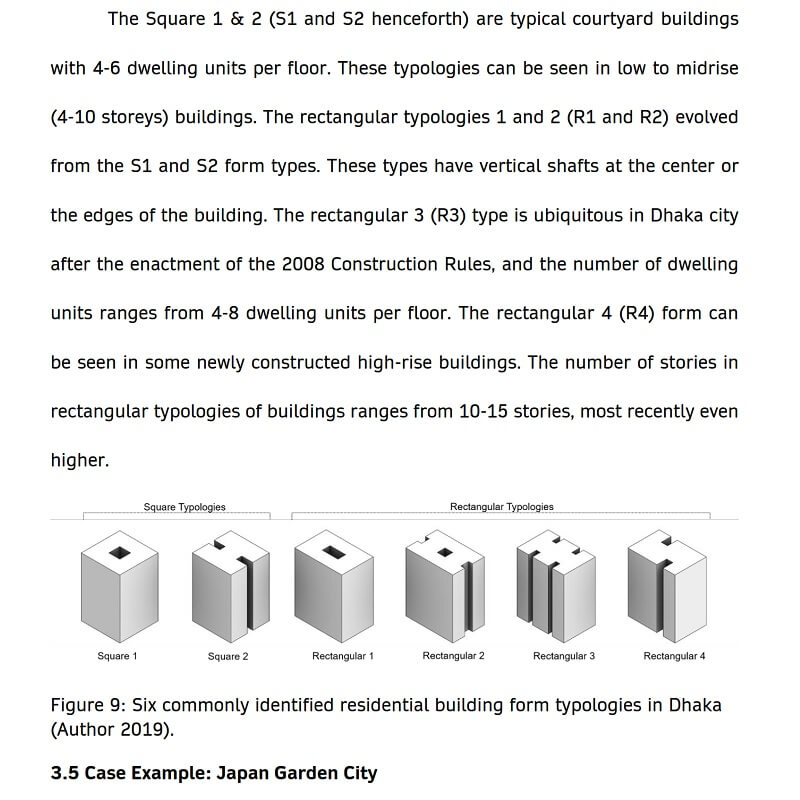 Surprisingly, residential buildings are designed largely ignoring daylighting necessity in compact urban contexts in developing countries. It is imperative to ensure enough daylighting ingress in residential buildings for positive health outcomes and comfort conditions. Daylighting in high-rise residential buildings in a dense urban context is still a less explored field in empirical research.
Surprisingly, residential buildings are designed largely ignoring daylighting necessity in compact urban contexts in developing countries. It is imperative to ensure enough daylighting ingress in residential buildings for positive health outcomes and comfort conditions. Daylighting in high-rise residential buildings in a dense urban context is still a less explored field in empirical research.
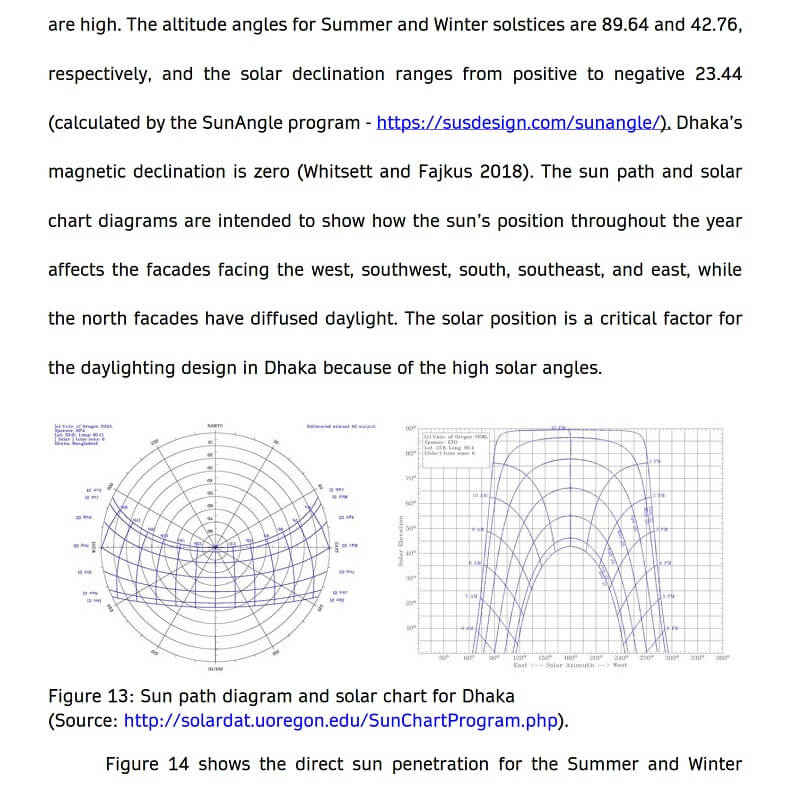 This research by Sumaiya Mehjabeen, presents an analysis of daylighting ingress relating to urban street canyon configurations of high-rise residential buildings in the dense urban context of Dhaka, Bangladesh. A computational workflow is used to investigate the impact of building and street canyon geometry on daylight autonomy in high-rise residential buildings.
This research by Sumaiya Mehjabeen, presents an analysis of daylighting ingress relating to urban street canyon configurations of high-rise residential buildings in the dense urban context of Dhaka, Bangladesh. A computational workflow is used to investigate the impact of building and street canyon geometry on daylight autonomy in high-rise residential buildings.
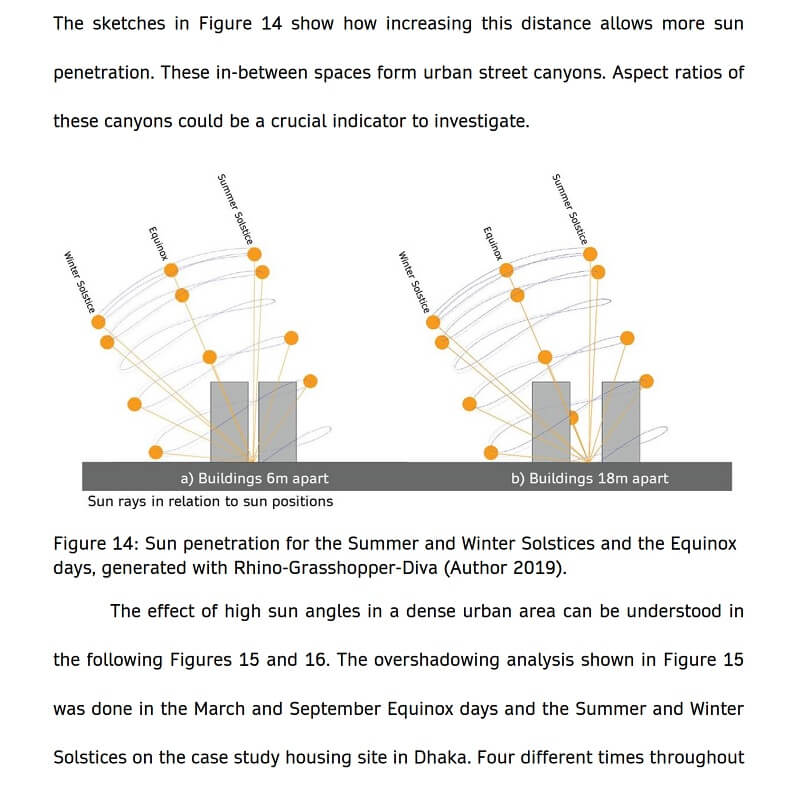 First, an analysis of a case example in Dhaka, Bangladesh, shows the challenges of daylighting in deep spaces in high-rise building conditions. Then, several identified residential building typologies in Dhaka, Bangladesh, are analyzed concerning how varied geometry of these typologies and width of urban street canyons impact daylight ingress.
First, an analysis of a case example in Dhaka, Bangladesh, shows the challenges of daylighting in deep spaces in high-rise building conditions. Then, several identified residential building typologies in Dhaka, Bangladesh, are analyzed concerning how varied geometry of these typologies and width of urban street canyons impact daylight ingress.
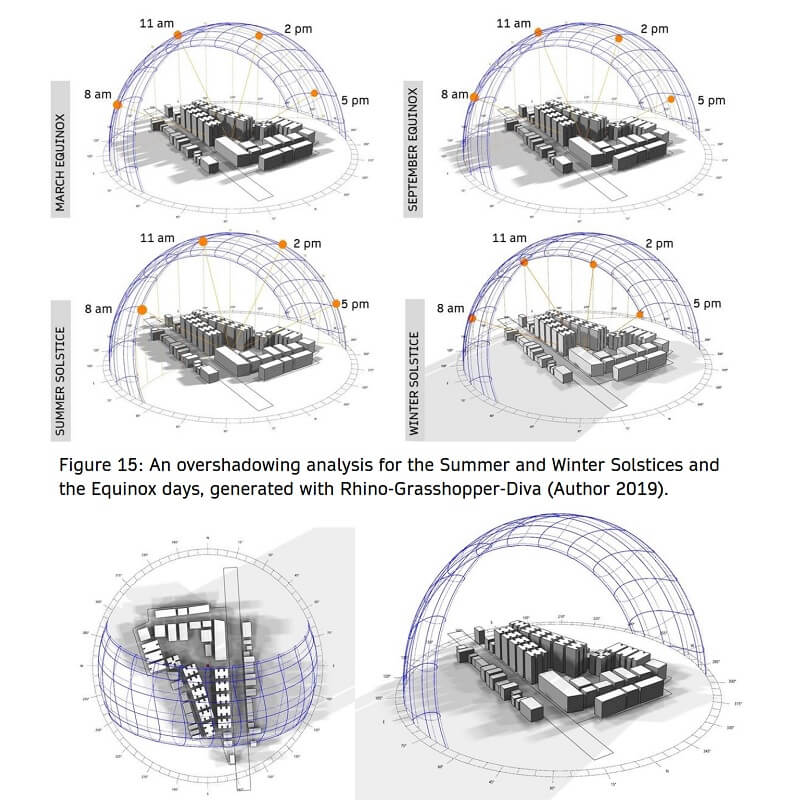 The key aspects to analyze daylight autonomy in this study are building geometry, surrounding obstructions, orientation, and urban street configurations. These are computationally analyzed and visualized utilizing software packages, Rhinoceros, Grasshopper, and the environmental plugins Honeybee and Ladybug.
The key aspects to analyze daylight autonomy in this study are building geometry, surrounding obstructions, orientation, and urban street configurations. These are computationally analyzed and visualized utilizing software packages, Rhinoceros, Grasshopper, and the environmental plugins Honeybee and Ladybug.
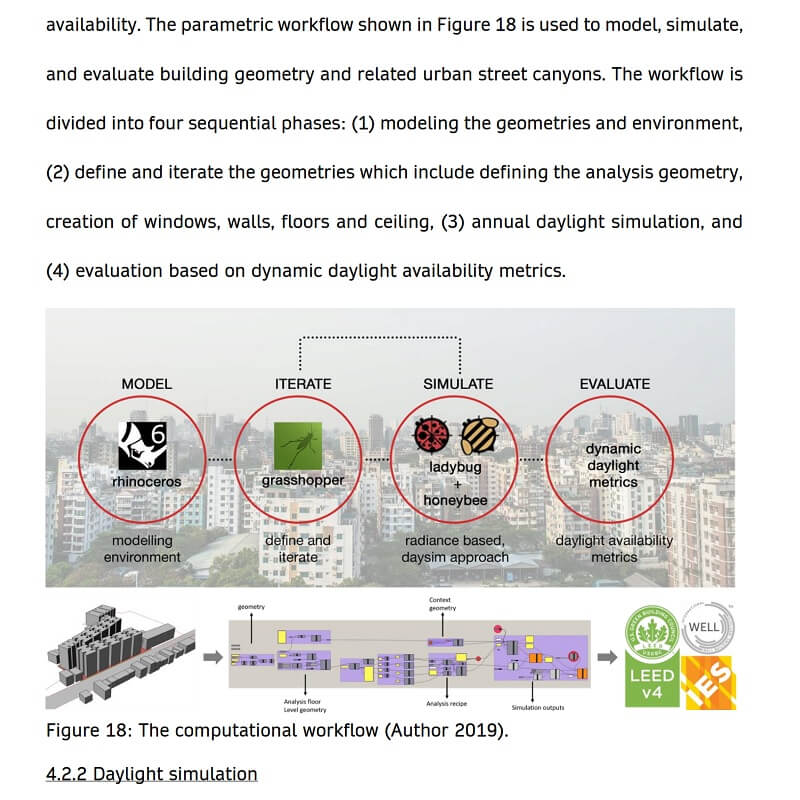 Comparing daylight autonomy levels that result from varying these aspects mentioned above in the simulation helps understand the impact each aspect makes in high-rise residential buildings in the dense urban context of Dhaka. Finally, recommendations for new configurations of residential buildings related to the adjacent urban canyon are given as daylighting design strategies based on the parametric investigation of the impact and efficacy of a residential block geometry.
Comparing daylight autonomy levels that result from varying these aspects mentioned above in the simulation helps understand the impact each aspect makes in high-rise residential buildings in the dense urban context of Dhaka. Finally, recommendations for new configurations of residential buildings related to the adjacent urban canyon are given as daylighting design strategies based on the parametric investigation of the impact and efficacy of a residential block geometry.
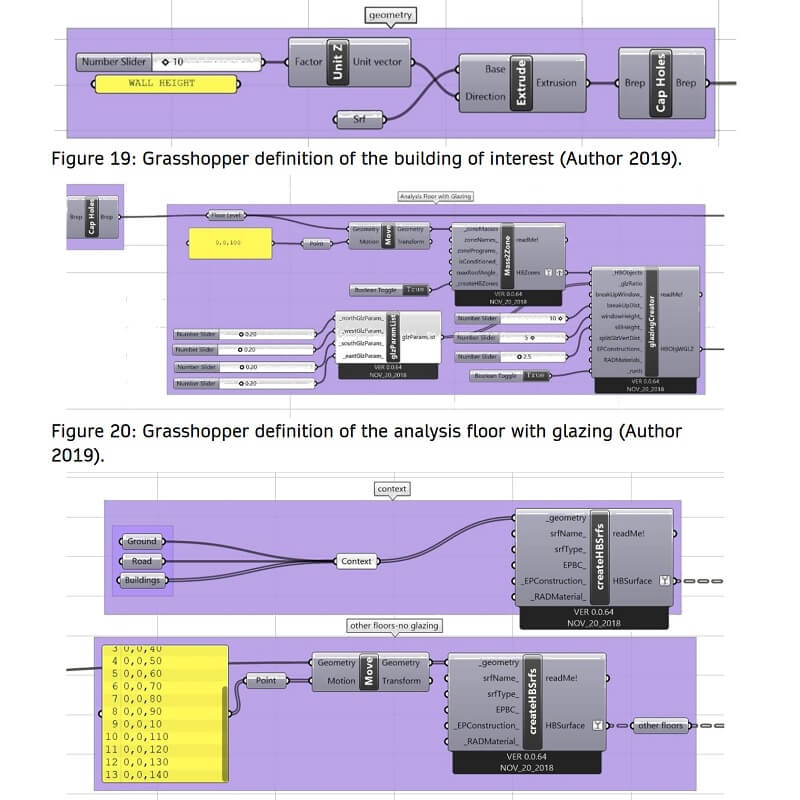
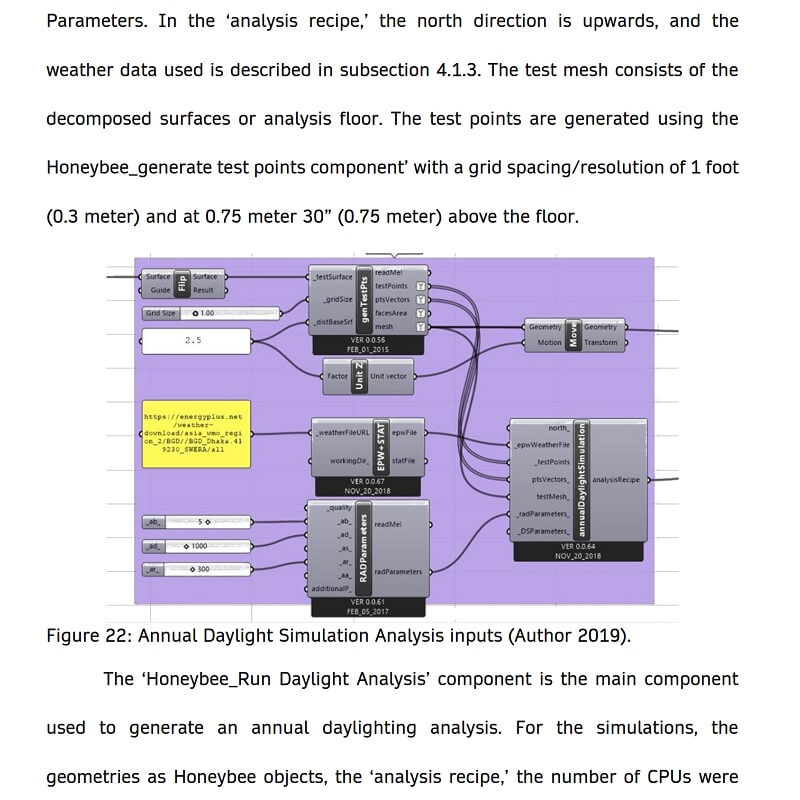
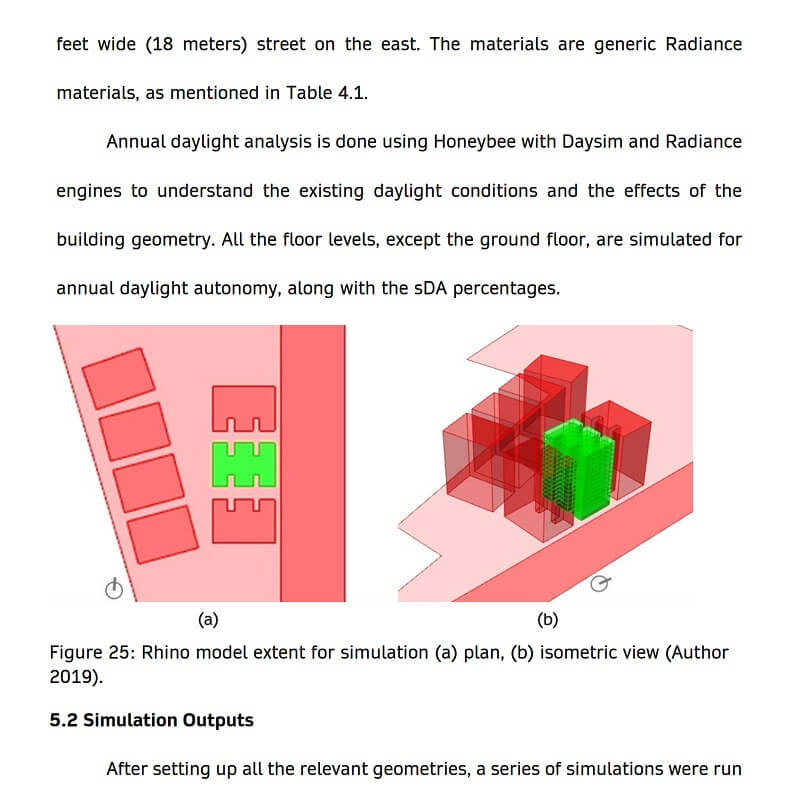
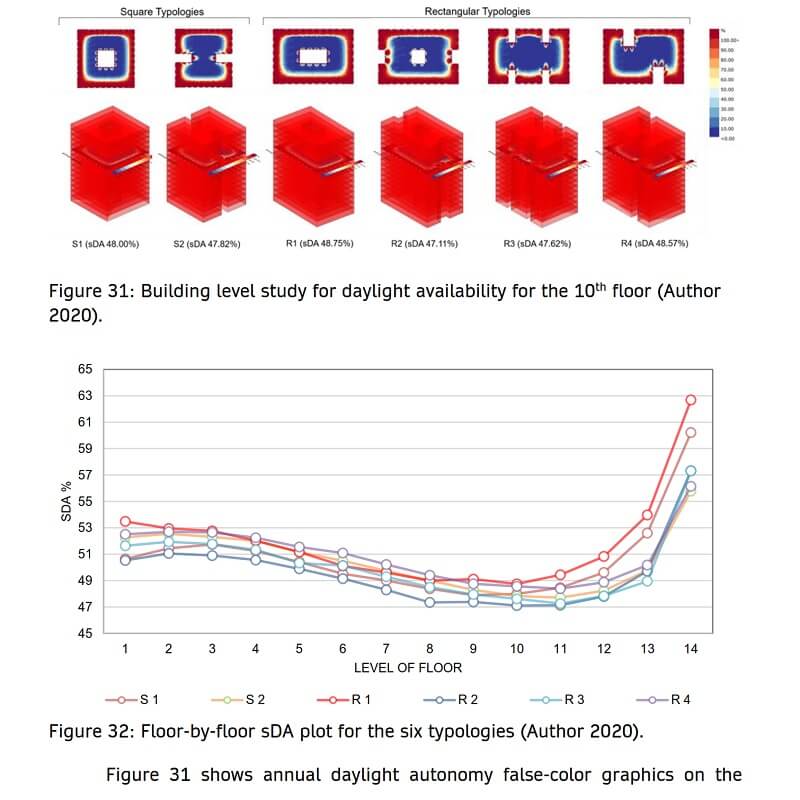




























Comments
Felsager
This material is outstanding. More papers of this sort should be linked in this site. This is a time saver in many ways.
rezae
Thank you, sure we do.